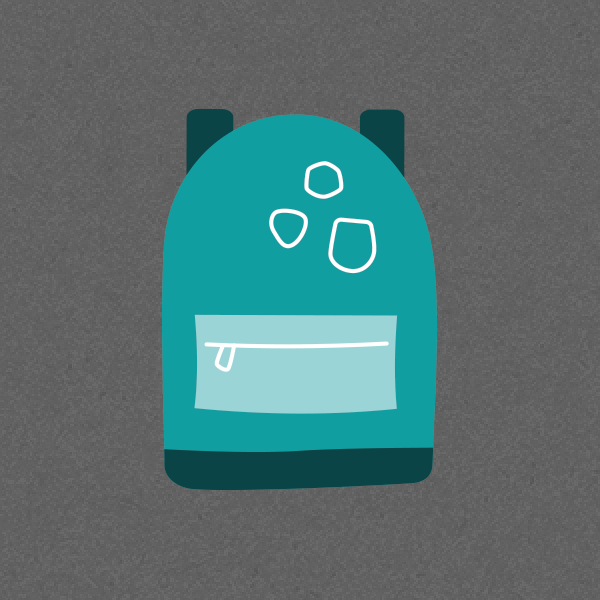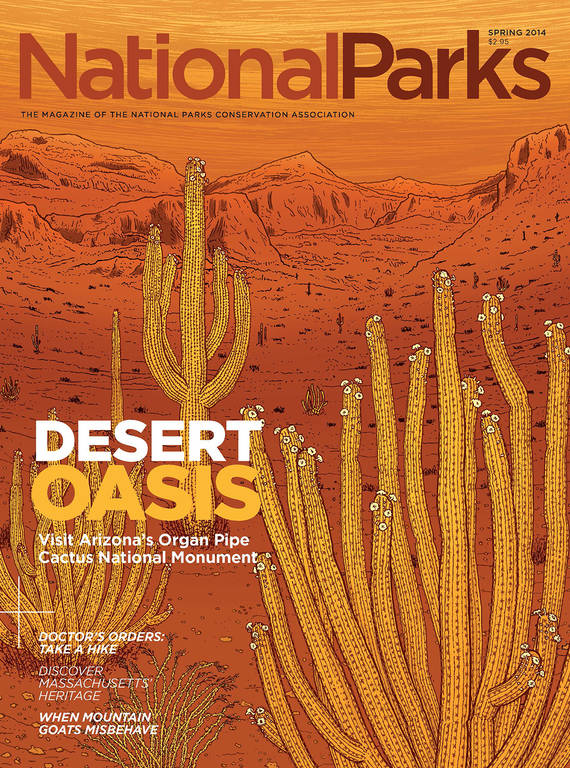Spring 2014
A Prescription For Nature
A physician who prescribes outdoor activities for her patients believes that time spent in nature could become the next vital sign.
When is the last time a doctor or nurse asked you about your exposure to nature? Perhaps you were asked if you smoke, how much alcohol you drink, and whether you exercise. But time spent in nature? An unlikely topic. And yet evidence has made it increasingly clear that exposure to green space can affect our health just as much as other lifestyle factors traditionally covered in a medical visit.
Of course, it’s hard to tease out cause and effect. Could it be that healthier people are more apt to live near natural areas and venture outdoors? Or could it be that any activity that gets you off the couch and away from screens will improve your health? Perhaps. But even when controlling for income level, screen time, existing health conditions, and other variables, research shows that nature exposure can have a significant beneficial influence on well-being.
Hundreds of studies have documented the effect of green space on health outcomes: In Copenhagen, living a short distance from a garden or park has been linked to less stress and a lower body mass index. In the United States, children diagnosed with attention-deficit hyperactivity disorder (ADHD) were more able to focus in a natural setting than in either a built outdoor environment or an indoor one. Another study from the United States revealed that children in low-income households lowered their risk for asthma by living near areas with higher tree density. In Japan, greener neighborhoods and more parks were associated with greater longevity among the elderly. One study, published in the medical journal Lancet, even suggests that nature exposure can help reduce health disparities, improving health outcomes in poorer communities so that they more closely match those from wealthier neighborhoods.
This growing body of research has made me appreciate my local parks as a ubiquitous, low-cost, low-risk health therapy worthy of a prescription. The “nature prescriptions” I dole out to my San Francisco patients look something like this:
Drug: Exercise in Glen Canyon Park (See attached Google map.) Dose: 45 minutes of walking or running Directions: Monday, Wednesday, Friday, and Saturday at 7:00 AM Refill: Unlimited
What I’ve noticed in my practice mirrors what has been observed in the studies: Inactive patients who initiate a new exercise regimen outdoors are more likely to stick with it than those who join a gym or work out in the confines of their basement. It seems that a number of things contribute to this “stickiness”: the constantly varying scenery, the camaraderie of the trail, the fact that monthly dues and expensive Spandex outfits aren’t required. And consistent with the research findings, my patients report a host of other benefits from their nature routine: less fatigue throughout the day, a sense of calm, better sleep, a drop in weight, and even lower blood pressure. Of course, not every patient takes the nature Rx and “runs” with it. But for many, a physician’s advice, backed by a paper document, is just the push needed to venture onto the trails.
“Nice idea,” you might be thinking. “But my doctor barely has time to listen to my heart and refill my diabetes or blood-pressure medicine, much less counsel me on woodland therapy.” And time—or lack thereof—isn’t the only obstacle. It takes one nature lover to inspire another; the fact that about 50 percent of U.S. doctors and nurses are overweight and 40 percent never exercise suggests we have no more familiarity with nature than the rest of the population. Although all of this may be true, I still think that my colleagues and I should add “nature champion” to our list of qualifications. In fact, I can’t think of any health-promoting activity that’s more worthy of our time.
Diabetes, heart disease, and related illnesses such as obesity are responsible for the lion’s share of suffering and expenditures within our health-care system. If more physical activity in parks could lower the rates of these chronic diseases by a mere 5 percent, estimates from the Institute of Medicine show that it could cut medical costs by about $25 billion annually. Although this alone offers a compelling argument for why health providers should become nature champions, there is an even bigger one: Our collective open spaces, from our vast national parks to our tiny city parks, act as a giant health reservoir. These lands control floods, recycle carbon and nutrients into the soil, filter toxins from air and water, and bank seeds for biodiversity, activities that sustain all of us regardless of whether we ever set foot in nature. By championing the benefits of getting outdoors, my medical colleagues and I can take abstract concepts—such as global warming and loss of biodiversity—and connect them directly to our individual health.
We can explain that the same preserve that protects several species of birds can also improve blood pressure or depressive symptoms; or that the same wetland designed to fight erosion can also help improve a child’s focus and maybe even his or her school performance. Suddenly the equation shifts and our patients understand that conservation is not just a feel-good pursuit, but a matter of personal health.
While office-based “nature prescriptions” offer one way to start this conversation, health centers across the country are starting to look at more system-wide strategies for making the nature-health connection.

National Parks
You can read this and other stories about history, nature, culture, art, conservation, travel, science and more in National Parks magazine. Your tax-deductible membership donation of $25 or more entitles…
See more ›The Southeast Health Center in San Francisco’s Bayview-Hunter’s Point, a predominantly low-income neighborhood on the southeast side of the city, is collaborating with the Golden Gate National Recreation Area and the Institute at the Golden Gate to educate the clinic’s health providers about local nature trails and to explore ways of increasing patients’ access to nature. The project is funded by several partners including the Kaiser Permanente Foundation. When I spoke to Park Superintendent Frank Dean about the program, he told me that he and his staff hope that the Bayview project will help park administrators everywhere to develop programs and trails that better serve the wellness needs of a more diverse population. “We’re thinking of grading trails more like ski areas: easy, intermediate, difficult,” he said. “We tend to assume that people have their backpack and hiking boots and know what to do. But this isn’t the case for many people. This partnership with the Bayview should give us all kinds of new ideas about how to make our services more accessible.”
Kids in Parks is another promising nature-health partnership—one that started in North Carolina but is slowly expanding nationwide. This program uses pediatricians’ offices as “trailheads” with the goal of getting kids and parents off the couch and into the woods. The distinctive Kids in Parks bear-paw logo can be found on stickers and brochures in the medical waiting rooms and at the park’s trailhead. So far, the program includes 55 different trails in five states and is responsible for prompting children and adults to spend more than 10,000 hours outside, unplugged.
With each passing month, I learn about new medicine-nature collaborations—some funded by private hospitals, some by insurance companies, and some by government agencies, including the National Park Service and the Centers for Disease Control and Prevention. Perhaps sometime in the not-too-distant future, “nature exposure” will become a critical piece of data collected at the start of every medical encounter. In other words, it will join blood pressure, temperature, and pulse as the newest “vital sign.” After all, many hospitals and clinics have added smoking status and exercise frequency to the list, and one could argue that a connection to nature is just as critical to our survival. Of course, quantifying “nature exposure” offers a unique challenge. Maybe we could begin with this question: “In the past week, how many times have you skipped a stone, smelled a flower, chased a butterfly, or watched a sunset?”
About the author
-
 Daphne Miller, MD Contributor
Daphne Miller, MD ContributorDaphne Miller, MD, is a physician, author, hiker, and associate clinical professor at the University of California, San Francisco. She has been involved in the National Park Service’s “Healthy Parks, Healthy People” initiative since 2008. Her books include Farmacology and The Jungle Effect.


